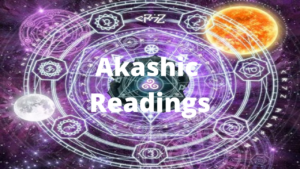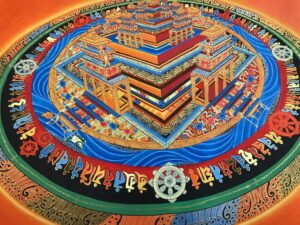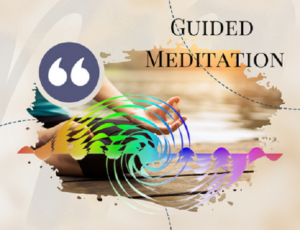
36 Principles of Reality
Among the 36 Principles of Reality as denoted by Kashmiri Shaivism, are found Five Principles called the Panchatattva, also referred to as Five Words, Panchamakara, as each of the five begin with the syllable ma, viz. madya (wine), mamsa (meat), matsya (fish), mudra (Fried food), maithuna (coition). These five are often considered to be essential components in tantric practice and are most often misunderstood due to the literal apprehension of the meaning rather than its allegorical reference, which of course begs the question then as to why allegory or metaphor are employed in the first place.
Four Stages of Consciousness
The ritual of Panchatattva is designed to promote spiritual evolution from one stage of consciousness to another, eventually reaching a highly-focused stage of single-mindedness, or samadhi. Abhinavagupta’s Tantraloka clearly defines four stages of consciousness as waking state, dream state, deep sleep and a fourth (turiya) beyond the rest. These stages must be understood as proceeding inwardly or upwardly from gross apprehension of reality to ever subtler perspectives.
In the Gupta Sadhana Tantra, it is mentioned that these Panchatattva are required for liberation, not easily available even to celestials, and it is advised to worship Kali with these five elements, and in so doing, the Goddess will bestow Shambhavi (perfect meditation), happiness and liberation. It is said that through such worship one goes beyond the body, mind and speech and thus must also go beyond the tattvas themselves. How then does one go beyond the five tattvas?
Three Bodies
Yogic philosophy tells us that our existential being is comprised of three bodies: a physical, astral and causal body. These three bodies themselves are comprised of five layers, or sheaths, called koshas. (Wikipedia has a great kosha primer.) The physical body is made up of the Mahabhutas, the five primary physical elements: earth, air, water, fire and ether. We work with these elements through a variety of physical practices like asana and pranayama.
The astral body is said to relate to our senses, through the five organs of action known as karma indriyas, five organs of knowledge known as jnana indriyas, five vital energies, or pranas, and the antahkharana system made up of the four cognitive faculties of mind (manas), intellect (buddhi), consciousness (chitta) and ego (ahamkara). These 19 different elements make up the body’s feeling and sense apparatus. A causal body is also understood to exist as a blueprint of both the physical and subtle bodies, containing within itself details of the sanskaras (impressions) of memory, habit and experience. Here is where we might view the karmic imprint on our soul.
Indriyas: Organs of Sense & Function
The sense organs are those which detect the various sensory objects in our environment and circumstance, relaying the sensory input to the mind for intelligent processing. The ability to impeccably apprehend any sensory object, as it is, via any of the sensory apparatus and single minded focus, without superfluous judgment, is a siddhi in its own right, and is known as indriya jnana – unadulterated knowledge of objects.
IndraM AtmA tasya sAdhanam indriyam |
Indra means Atma, the soul. Indriya is its sadhana, or tool for getting knowledge. This means that indriya is the source of Atma’s perception and fundamental for its acquisition of comprehensive knowledge. Through indriya, the soul is able to experience.
5 Behaviors of Indriya
The Soul, Atma or Indra, experiences knowledge through various modalities and behaviors.
- Indra Linga is that mode through which Soul shows its presence.
- Indra Drushtam is that through which Soul sees.
- Indra Srushtram is that which is created by Soul.
- Indra Jushtam is that which is associated with Soul.
- Indra Dattam is that which is given by Soul.
Knowledge is gained through sensory perception and associated with sensory objects, absorbed by the mind and screened by the intellect, and ultimately it is Soul which enjoys the final fruit of the process, and so every behavior of perception and apprehension is ultimately associated with the Soul, Indra. Indriya, an amalgam of two words, ‘In’ (subjects and objects of sense) and ‘Dravanti’ (to flow towards). Indriya therefore means that which moves towards sense objects. Indriya is the source, or means, through which the Soul experiences the knowledge of the sense objects.
Classification
Buddhi Indriyas are the 5 sense organs most appreciated viz. eye, ear, nose, tongue and skin. These are called buddhi indriya because knowledge is embedded in these organs; they help in perceiving knowledge of sense objects. Each buddhi indriya is made up of all the Mahabhutas, the five primary elements, but is predominant in only one. The function of these indriyas depends on the quality and quantity of the quality of the predominant element.
- Chakshu Indriya (eyes) is dominated by the fire element (Agni Mahabhuta) and perceives Roopa Guna (sight sense)
- Shotra Indriya (ears) is dominated by the ether element (Akasha) and perceives Shabda Guna (sound).
- Ghrana Indriya (nose) dominated by earth element (Prithvi) perceives Gandha Guna (smell).
- Rasana Indriya (tongue) dominated by water element (Jala) perceives Rasa Guna (taste).
- Twak Indriya (skin) dominated by air element (Vayu) perceives Sparsha Guna (touch).
Karma Indriyas are the 5 organs of action viz. speech, grasping, locomotion, excretion and procreation. These five are designated for performance of specific motor functions and operate in tandem with the buddhi indriyas.
Mind is the eleventh Indriya and associates itself with characteristics of the preceding ten per circumstance and condition. It has been given command and control of the sensory apparatuses in order to fulfill the primary function of delivering experience to the Soul.
The Eleven Indriyas are the medium through which we decode, sense and feel the entire creation, and that special link between the creation itself and the knowledge of everything we perceive.
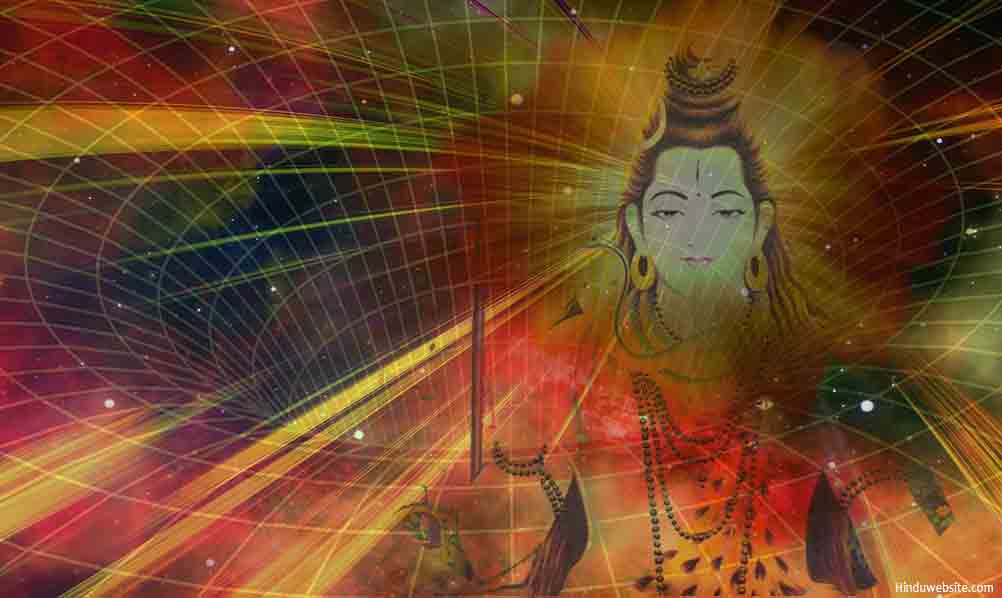
The 36 Tattvas
(Principles of Reality)
The 36 tattvas are a blueprint of reality, and of every form that reality takes as it manifests itself from the first birth of light, into ever grosser states of conscious being until it finally arrives into the universe wrapped in the forms of the Great Elements. Akin to the Kabbalistic Tree of Life, the tattvas reveal a map of consciousness, and the journey consciousness takes, not only from its birth in the Godhead into physical creation, but the journey back as well.
Tattva means that which is. Seekers of wisdom familiar with the Indian traditions may be familiar with the primary teaching tat tvam asi, or you are that. The tattvas show you in impeccable detail precisely what that means.
A tattva is that which, by virtue of its reality, enables conscious agents to subsume the categories within it.
Abhinavagupta
Evolution or involution, evolving or consciously returning, rather than devolving which implies a breakdown – the spiritual aspirant’s journey is one of sublimation and a return to cosmic origins. The tattvas, therefore, can be looked at in ascending or descending order. Each tattva represents a particular state of being, a mode of apprehension of the total reality, a position within the reality and a sense perception or mode of awareness of the total reality which is the conglomerate of all the tattvas together. The first 4 sets of five tattvas comprise the ‘lower tattvas’ and are arranged in such a way as to make their correspondence to each other clearer.
Tattvas 36-32 The Pancha Maha-Bhutas (The Five Great Elements)
Here is where everything has coalesced into the physical reality you apprehend daily. Earth, air, water, fire and ether have found their home in the celestial bodies and our bodies, too.
Tattvas 31-27 The Principle Senses (The Buddhi Indriyas)
The direct result of the coalescing of the elements and natural evolution of awareness. If there is an element, there must therefore be a senses which is formed of it before there is a sense capacity which can sense it. So here, as referenced above in the article, we find Odor (gandha), Flavor (rasa), Appearance (rupa), Tactility (sparsa) and Sound Vibration (sabda), each predominantly associated with a particular element, while also being active in each, and coming to life as manifestations of those elements in a form that might be apprehended by the living consciousness within us – the Soul.
Next come the functional relationships of awareness with the reality – the karma indriyas.
Tattvas 26-22 Action Capacities
Evacuation (bowels), Reproduction (genitals), Locomotion (feet), Manipulation (hand) and Speech (mouth) define how we will act in relationship to our environment and circumstance.
Tattvas 21-17 Sense Capacities (Jnana Indriyas)
These are the sensory energies that we are most familiar with and which correspond to the first manifest principle senses from the elements. They are: smelling (ghrana), tasting (rasana), seeing (caksus), touching (tvak) and hearing (srotra).
Human beings, raised on a diet of social education, culture and consequently general bias, tend to be disconnected from a visceral appreciation of the multi-facets of sensation, living most of our lives in our heads so to speak. “This is why the Tantra stresses sensual meditations – meditative savoring of food and music, as well as slowed down and ritualized acts of refined awareness like the Japanese Tea Ceremony (Chanoyu) – that allow us to cultivate our ability to allow the senses to experience their objects fully. When fed properly, the “goddess” rewards you by suffusing your awareness with aesthetic rapture, increasing your capacity to experience beauty. The whole world becomes more vivid and real, more radiantly lovely, more full of life-energy, not the relatively dull and lifeless world perceived by one living in their own mental world, or the insubstantial shadow-world perceived by a transcendentalist meditator. The latter are the worlds of one who starves the goddess of the senses.”
Tattvas 16-14 Antahkarana (The Inner Instruments)
The four components of antahkarana are #16 the mind (manas), #15 the ego, #14 the intellect (buddhi), and…memory (chitta), via which we synthesize the sensory input into determinations passed on to the sense organs. Only memory is missing from this set due to its position as receptacle, storehouse and crucible rather than active agent of awareness.
Mind (manas) is that faculty of active cognition that receives our attention when we train it through meditation. Ego (ahamkara) is that which lends the personal identification to the synthesized data, taking on a persona in direct correlation to all sensory input, identifying with it and creating for the first time a distinct ‘I’ or a self-awareness. Ego is an aggregate of all experience and sense perception, essentially illusory because it would not exist without the external stimuli by which it creates itself. “Ego, then, is a persistent contraction of awareness in the form of a collection of self-images that causes suffering through artificial self-limitation.” And here the ego tends to get stuck among its many definitions of itself rather than exist in flux with the natural expansion and contraction of the universal principles. “The ego is not the enemy. It is not to be annihilated, but rather purified and infinitely expanded. Since the ego simply means “what you think you are,” expanding it means expanding your sense of self, including more and more in your self-definition.” From this point is where we begin an approach to a more cosmic consciousness, or an awareness of and identification with all things.
Tattva #14 Buddhi (The Discerning Faculty)
The most integral tool in our box and the one which every school of yoga pays homage to, the discerning faculty grants us the ability to conceptualize, imagine, and make decisions. The yogin will tell you that it is through the application of discernment alone that one will attain liberation in this life – and it’s true! Consider. Is there any other mode of determining what is good or bad for you, via introspection or external analysis? The practice of using the intellect in such a way as to determine the ultimate truth that lies within the flux of the senses and at the core of everything sensed is called Jnana Yoga, and the biggest hindrance to the practice of Jnana Yoga is memory (chitta), or rather the samskaras (mental impressions of all accumulated past experiences) that chitta stores. “The spiritual path is very much about developing clear vision, about cultivating the ability to see things as they are. In classical yoga philosophy, the practices of yoga (especially meditation) have the primary purpose of dissolving the samskaras in order to bring about this clear vision, and the clear discernment that results from it.”
Tattva #13: Secondary Materiality (Prakrti)
This is the physical universe made up of matter and energy as we know it – Mother Nature. This tattva also refers to the body/mind vehicle of the Soul. Prakriti, represents all of manifest physicality on a continuum, all layers interacting with each other, what we might call the 4d model of reality. At the same time, Prakriti also represents all of that which hasn’t manifest yet but lay waiting in the form of potential. In its unmanifest state, all the gunas are in perfect equilibrium. (Refer back to the Indriyas.) The Gunas, like the elements, may also be understood to express firstly as fundamental principles, “…or qualities of nature: sattva (lucidity and lightness); rajas (energy and passion); and tamas (darkness, heaviness, and inertia). These three gunas recombine in various proportions to create tattvas 14-36 (above). The field of prakrti, then, is everything that can become an object of consciousness (i.e. everything except tattvas 1-12).
Tattva #12 The Soul, or Atman (Purusa)
The Soul is the witness, the rider, the receiver of the sense experience. Atman is Shiva (The Ultimate transcendent, singular reality) armed with, or encased in, the five limited capacities (kancukas) of Maya (Tattva #6). These shells, or veils, limit Shiva’s awareness to the individual perception (jiva) and enable Him to experience sentience through sense and action in a world governed by dualistic principles.
Tattva #11 Causality (Niyati)
The law of karma, of cause and effect. The principle of causality, combined with the above senses, actions and perceptions, ensures that our experiences are impressed (samskara) upon us in the form of karma. As the spiritual seeker, or aspirant to higher consciousness, gradually clarifies personal perception and begins to appreciate that, in fact, no individual exists to experience or take final responsibility for the manifestations of reality, the sense of doership is relinquished and the karmic debt is no longer acquired. While the ego retains the sense of doership, owning the senses and actions, the impressions will attach and karma will continue to determine your experiential results.
Tattva #10 Time (Kala)
Requisite to embodied experience, there must be a sequential beginning and an end. Past, present and future need to exist in order to live as a mortal being. At once the cause of our suffering as well as that of our enlightenment – it is the ultimate double-edged sword and two-sided coin. We cannot be in the physical world without this limitation. Neither can we appreciate a life without acknowledgement in terms of reference points. This is where we seek Buddha’s Middle Way, and strive for a right perception of being, free of reverie, fantasy, anxiety or regret.
Tattva #9 Desire (Raga)
Where would we be without it? Buddha calls it the root of suffering. Sure. Without desire there surely would be no mental anguish accompanying the lack of fulfillment of the desire. However, desire as a tattva is understood to be a limitation, in the form of a capacity to achieve, attain or acquire that which ‘I’ is needing to fulfill itself as an individual, to experience the life it has manifested itself to experience. Desire in its rawest potential form is willpower, a very special power that allows us to express the fullest range of our beings according to that which pulls us forward, which is ultimately, the desire to know ourselves and realign with the Godhead that spawned us. You can see now how the entire tattva system might be recursive, forever flowing from top to bottom to top again. As we begin to understand the true creative potential of our desires and will power (iccha-shakti), lower-self-identification and an inertia-based modality that sees us wandering through life aimlessly starts to be transcended, and the base associations with desire are sublimated into a realization of what the One true desire is really for.
Tattva #8 Limited Power of Knowledge (Vidya)
Unmesa-Shakti, an unfolding knowledge, or a developing appreciation for what is. At this level knowledge is incomplete and we are only able to apprehend the reality in bits; the perspective is narrowed, as opposed to the greater apprehension known as jnana-shakti, the divine power of knowing. With this knowledge we are afforded the capacity to approximate an understanding reality.
Tattva #7 Limited Power of Action (Kala)
In this principle we can see the limitation that God has placed on His own omnipotence; power has been confined to the animation of the soul’s capacities and with these capacities the Soul will move through experiential reality, cultivating Kriya-Shakti (the power of divine action) on the way to full realization of itself again.
Tattva #6 Maya (Source)
Often personified as illusion, She is the source of the Lord’s power to project itself into manifestation. From this source, the dualistic capacity to perceive and act within physical existence is creatively expressed by the will of the divine. The impulse to live as a being separate from itself, in order simply to experience that life, has been manifest as a power to create differentiation to achieve that goal. Without differentiation, after all, there can be no perception of this and that, no distinctions; the separation is necessary. Maya is the Goddess to the Divine’s God. She the entire manifest reality to His inspiration or intention for the same. Of course, They are One, but now here, they are quite suddenly and irrevocably Two.
Suddhadhvan
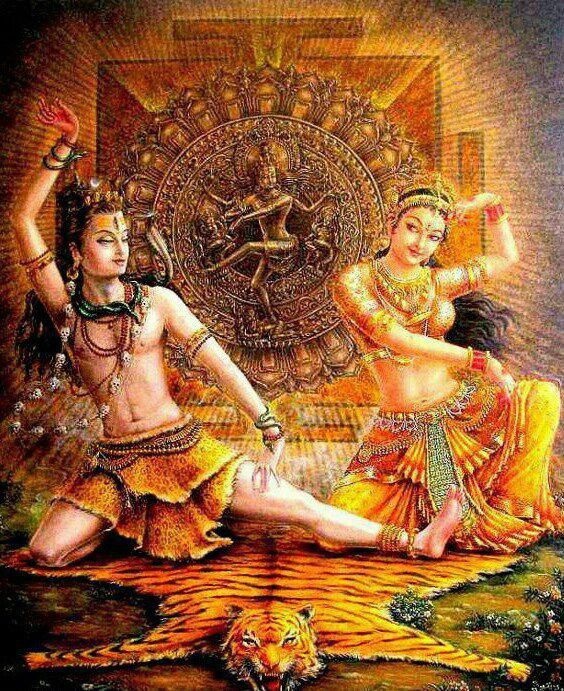
From this point, what is referred to as the pure universe, or suddhadhvan, will be delineated. The five tattvas of the pure course are not affected by the so-called pollutants (mala) of individuality, the subject-object differentiations and the actions (karma). These five tattvas are the divine aspects found permeating the whole manifest universe. “Pure creation (suddhadhvan) is the higher realm of contraction and in contrast to the totally undifferentiated consciousness of Paramasiva, is pure only in contrast to the levels below maya.
Each of its levels is characterized by a certain power (Shakti), namely consciousness (Cit), joy (Ananda), intentionality (Iccha), cognition (Jnana) and action (Kriya). Each of these qualities of supreme consciousness is instrumental in manifesting the so-called impure universe of the lower tattvas.“
Tattva #5 Pure Mantra or Wisdom (Suddha-vidya)
Vidya has two meanings viz. mantra or wisdom in so far as the primordial, transcendental and all-pervading, originating and inspiring wisdom that leads to the manifestation of the entire physical universe, are those phases of the God and Goddess expressed in the form of the 70-million mantras – all the mantras in existence. In the tantric tradition, the mantras are conscious beings, analogous to the angels of the Christian tradition. “…In this tradition, a mantra, its deity, and its goal are all one and the same. Thus, for example, Laksmi’s mantra (Om srim mahalaksmyai namah) is the Goddess Laksmi in sound form; it is her sonic body. Nor is her mantra sometimes separate from the goal from which it is repeated (to cultivate abundance), for it is the very vibration of abundance. So all the various deities of Indian spirituality exist on the level of the Suddha-vidya as phases of Siva-Sakti’s awareness – the many facets of the One jewel.”
“The divine Power that corresponds to this level is kriya-sakti, the Power of Action, because the primary characteristic of mantras is that they are agents of transformative change (i.e. action).”
Tattva # 4 God (Isvara)
The generic, personal, non-sectarian God of definable qualities. This is the God which we can name in any tradition. Jnana-shakti is the operative force in this sphere; by this knowledge of the characteristics of reality, the Lord issues forth into an existential and experiential creation, empowering Himself in Tattva #5 to stimulate the world-source (maya, tattva #6) so that She begins to produce differentiation of the lower tattvas, starting with the contractions called the kancukas (tattva #7 and below).
Tattva #3 Sada-Shiva (Still, and Eternally Shiva, the Benevolent)
We’ve arrived at the level where words fail; there is no description for the God force or the Divine Will (Iccha Shakti) operating here. In the Kabbalist’s language we might associate this level with the Shem, the unpronounceable 72-syllable name of the God as everything and so far beyond us that we lack language to even imagine. Here the tree of life shows us the ineffable light which shines down urging the God into manifestation at tattva #4 – and what kind of feeling or intellectual model should we assign to that? The Sada-Shiva tattva is the first stirring and movement into the realm of differentiation. Here the overarching expression is the first identification with something to be identified with. I am, this. Totality is conscious of itself in relation to itself. Here ‘I’ experiences Unity consciousness, still an experience of consciousness, right on the cusp of complete non-differentiation, or non-dualism.
Tattva #2 Power (Shakti) The Goddess
There is God and there is Goddess, two sides of a single coin. There is the inspiration and the ignition, the intention and the delivery. Shakti is the Force without which Shiva would be inert. Shiva is the seed without which Shakti would have nothing to nurture. She is the original power, the potency or energy and driving force behind all potential to express reality into physical, discernable terms.
Tattva #1 Shiva, the Benevolent One
Beyond qualities, quiescent, the birthing ground of all reality. Transcendent of all. The point from which all paths emit and to which all return. Stability amidst chaos. Ground zero. Plato’s First Principle. Shiva holds the Powers and remains as Nothing until they are released and allowed expression. He does not embody the potencies as Shakti; He is Their Father and gives Them ultimate Freedom as a benevolent Father Will do. So Shakti shines and thereby also receives our adoration and worship because of it while Shiva often remains completely Silent, just holding space, not only for the Goddess, but for us all. Depending on the school of thought, whether Krama of Tantra or Kabbalah or Tao, Shiva is that principle that defies perception and comprehension of reality altogether, disappearing into that indescribable Void of Absolute potential.
Which leads us to the true Heart of the matter at hand, the truth and ultimate reality that every seeker must finally understand in order to really appreciate all the rest.
Tattva #0 Paramasiva
Not the beginning nor the end, but that which resides in all. Not the highest tattva nor the lowest, but that Lord that embodies them all, simultaneously transcending them all and expressing them all, living through them all. Paramasiva has no place on the list because He permeates them all as their essence. This whole universe is One Reality – unbroken by time, un-circumscribed by space, unclouded by attributes, unconfined by forms, inexpressible by words, and impossible to understand with the ordinary means of knowledge. This heart, or essence, is the light by which all things are illuminated, the reality by which all things are real. It’s ultimate perfection in its trans-rationalism wherein everything manifest and un-manifest is indeed found to be one at the most sublime levels of understanding and perception that simultaneously defies the mind’s capacity to know and only the non-state of nirvana permanently residing in the Heart of Reality might divine the radiant splendor of this Divine Permanence, pulsating joyously in all that exists.
Sources
[1] Dr. Raghuram Y.S. MD (Ay) & Dr. Manasa, B.A.M.S. Jnana & Karma Indriyas (Paraphrased) https://www.easyayurveda.com/2017/05/05/jnana-karma-indriya/
[2] Abhinavagupta, Tantraloka (Sourced)
[3] Wallis, Christopher. Tantra Illuminated: The Philosophy, History, and Practice of a Timeless Tradition. Anusara Press (Paraphrased and quoted in italics)
[4] Gavin D. Flood, Body & Cosmology in Kashmir Saivism
[5] Abhinivagupta, Essence of the Tantras.

…is a Saiva Tantrika, Gyana Yogi and founder of Uma Maheshwara Yoga & Ayurveda. David has an MA in Semiotics, lives in Japan with his family and works as a coach in L & D, devoting his time to developing science-based tools and programs that help people reach the fullest potential of the human condition.
Discover more from REAL YOGA
Subscribe to get the latest posts sent to your email.



